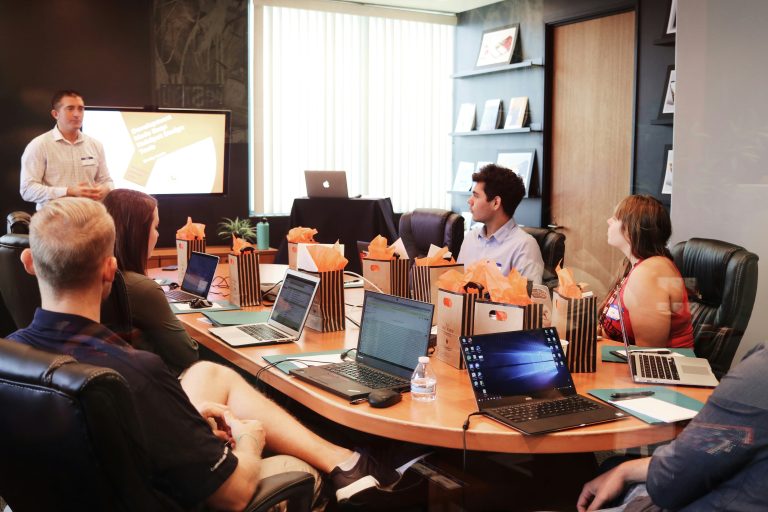Each month we will be sharing four, carefully-chosen articles from the latest issue of our flagship publication, which exemplify the high standards we strive to achieve. We hope you enjoy reading them and decide to become one of our valued subscribers.
To view our subscription options, please click here.
Bringing the apprenticeships programme to fruition has resembled the classic Laurel and Hardy feature The Music Box. The question is, not whether the piano will be delivered, but what occurs on the journey and, in what state it will be in when it arrives. We’re more than halfway through the timeframe that then PM David Cameron set out in August 2015 and, so far, the piano has taken some knocks.
Article by Andy Smyth – Early Talent & Apprenticeships Manager – TUI UK & Ireland
The plan was to deliver three million quality apprenticeships by 2020. Employers were to lead a new world class apprenticeship system and they’d also pay for the system through a new Apprenticeship Levy that would be introduced in April 2017. The Levy would finance the three million new apprenticeships and these would be based on a new model of apprenticeship standards that require a synoptic end assessment with graded outcomes and the reality of possible failure rather than just completion over time. New standards were to be presented on no more than two pages of A4 and had to describe the occupational role and the knowledge, skills and behaviours that were required. Groups of employers, Trailblazers as we’ve come to know them, would come together to develop the new apprenticeships. The new programmes would be based on new thinking and lessons learned from the employer ownership pilots, qualifications were to be avoided at all costs. The objectives were clear but the plan seemed only loosely defined at best and detail was hard to find.
Let’s fast forward to today, we’ve encountered so much change since Mr. Cameron’s statement; Brexit, new administrations either side of “the pond” and so much more on the world stage. Closer to home we still have revolving doors in Westminster, the Apprenticeship Levy is operational and the Institute for Apprenticeships has moved from shadow form to full live operation. We’ve got lots of new apprenticeship standards, new funding rules and guidance which is being continuously updated and revised. The Digital Apprenticeship Service, now known as the Apprenticeship Service, has been developed to be like an online banking tool to manage your levy funds, high profile training providers have collapsed, others including colleges and employers have fallen foul of poor Ofsted inspections. But we’re still pushing for the three million target. For good measure we’re also changing the shape of technical education and introducing T-levels, which will also be live by 2020, to complement the updated GCSEs and A-levels that we currently have. On the upside, we haven’t changed direction with regard to apprenticeships and the talk is very much on quality at this point. Confused? ’70’s US comedy Soap had nothing on this!
“Early adopters are aware of what they want to do and are actively setting up their programmes, but they’re wading through treacle much of the time, naysayers are writing off the levy as a tax, and the oblivious are just that”
There is currently development work of industrial scale happening to have new apprenticeships created and approved. It has been very interesting to see the number of Universities rallying to the call from Government, to offer Degree Apprenticeships, whereas other awarding organisations and training providers were expressly discouraged or even disallowed from getting involved in the trailblazer work, but that is perhaps an issue to pick up at another time. There are scares and stories being shared all over about the process and lack of pace. The proactive really are covering the ‘hard yards’ for everyone else – why have they done this, you may ask? Well, in order to use and gain ‘value’ from levy contributions they will need to offer apprenticeship programmes that it will pay for and, in order to gain ‘genuine value’, they will need to be the right programmes for the business. As ever, we have early adopters, naysayers and the oblivious and it’s very difficult to say just how many employers are in each group. The early adopters are aware of what they want to do, have built plans and are actively setting up their programmes, but they’re wading through treacle much of the time, naysayers are writing off the levy as a tax, and the oblivious are just that, paying the tax if they’re in scope, without realising that they could utilise the funds to their commercial advantage.
Many employers still don’t seem to understand how it works and therefore don’t know what they should do. The levy can’t be used to pay apprentices’ wages, amongst other things, so employers either need to create new additional positions in their businesses or place an apprentice in a job that already exists. Managers have the constant challenge of wanting to offer someone the opportunity to ‘learn and grow’, but they also have delivery targets and productivity measures to meet, which is inevitably leading many to conclude that they need to employ someone that can ‘hit the ground running’. We all know that in reality this isn’t actually the case, as all new starters require support and take time to settle. I would argue that by taking an apprentice, the manager has the opportunity to ensure that bad habits aren’t developed and then don’t need ‘unlearning’. So there is a trade-off, but my experience is that within three months, an apprentice can make a useful contribution to the businesses and, within six months, they are fully-functional, whilst continuing to gain experience. It is also great that an existing employee can become an apprentice where they are new to a role, or progressing to a new role, as this has the potential to help create a gap in an entry level role that can also be filled by a new apprentice.
So, you may ask, what has Government been doing to help employers transition their businesses to use apprenticeships? Well it is fair to say that there’s been lots of development on Direct.Gov, and the new IFA website is very useful, but when will employers actually have the time to research all the information? It’s like searching through a manual for your new TV, only to find that it answers every question but the one you have. The truth is, as with all new things, pragmatic impartial advice and guidance is needed. In reality many employers are relying on training providers to advise them. Whilst I know there are many training providers that do a great job, the reality is that they can’t reach everyone and their peers don’t always live up to the same standards and, let’s be clear, training providers are also businesses with targets to meet, and this will always have the potential to threaten impartiality. We must also think about the support that training providers have received in order to be ready to provide advice and deliver apprenticeships for employers, the answer in both instances is that they haven’t had enough. What is also adding to the confusion is that the existing apprenticeship framework models are still in operation, so we have two systems running side by side. If you weren’t confused earlier you will be when you try to remember if the apprentice that you are supporting is working towards a framework or a standard, and then try to recall the differences. Help!
There are observers monitoring progress and commenting that apprenticeship numbers have dropped by 61 percent. They say that the rise of management, skills related apprenticeships is unhealthy – now at No.2 by volume of apprentices – mainly due to existing employees becoming apprentices rather than new starters. So would you expect employers to blindly increase numbers by opening up programmes for swathes of first jobbers and ignore opportunities for their existing people? Decades of economic reports observe that the perennial issue for the UK, is a lack of management capability. Interestingly, exactly what would be the progression step for an apprentice finishing their entry to work apprenticeship, if ‘existing employees’, shouldn’t be a priority – after all, an apprentice is an employee.
“Ministers must hold firm and not change the system, monitor the trends and talk regularly with business decision-makers about their plans, to ensure that the direction of travel secures the best outcome”
What next then? We should congratulate employers for taking their time to get it right and for spotting and taking the opportunity to develop those people that will be the leaders of tomorrow. Ministers must hold firm and not change the system, they should closely monitor the trends and talk regularly with business decision-makers about their plans to ensure that the direction of travel secures the best outcome. What is the best outcome? It must be to use the apprenticeship system to get the right skills in the right place at the right time. We now have a range of apprenticeships that will provide excellent learning programmes to help individuals join the workforce and develop once they are in the workforce. They now cover Level 2 front line occupations all the way up to Level 7 specialist technical and leadership roles with a growing number having a Degree at the heart. The strength of the apprenticeship brand is underpinned by the quality of the delivery and end assessment and the impact they make on the individual. Any failures in these will weaken the brand and deter new entrants. The Institute for Apprenticeships must ensure that all standards, including those previously approved by BIS or DfE conform to today’s expectations. We must continue to celebrate great programmes, focus on supporting and developing well intentioned efforts where they are not yet great and close down providers that abuse the system. Let’s also not obsess on whether the learner is taking 19, 20 or 21 percent off the job training, let’s ensure that they are getting great support and learning opportunities that enable them to succeed and prosper.
www.tui.co.uk
*Stan Laurel & Oliver Hardy, The Music Box (1932)
First and foremost, independence is the core strength of theHRDIRECTOR. Unlike many competitor publications in the HR sector, we do not publish paid for articles. When we commission an article, the journey from synopsis to completion is through carefully considered collaboration with the author, both parties clear about the main objectives; to deeply explore the subject, and always to bring a new and informative perspective to the page. With the needs and expectations of the reader firmly in mind, the magazine has maintained unrivalled standards and enjoys an enviable integrity.
To subscribe, please click here.









